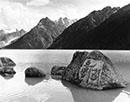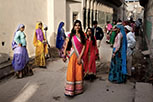Photo Galleries
Oceanic Coordinates examines Polynesia as a place in the geographical imagination. As such, it is less a photography project about a specific region and more about the visual deconstruction of a "Tropical Idyll." The project covers numerous islands spreading from Fiji across Samoa to Hawaii as it examines the South Seas trope in color photographs. The images are identified only by their latitude-longitude coordinates, with the idea of explicitly removing them from a well-known place or geographic narrative.
Over a period of ten years I roamed the back roads of the American South in my pickup truck and with my old 4X5 camera. The images I made portray a region in transition, where the boundaries between rural and urban, black and white, tradition and modernity, are subject to dissolution and transformation. According to Karl Raitz, who wrote the Introduction to a book of this work, "Zurick is advancing the concept of visual ecology, providing an intellectual and artistic engagement with matters pertaining to the regional character of the South. We shall long turn to his study as an excellent example of how geography and photography can meet."
In 2004 I began photographing sacred places in Tibet and the Himalaya with my 4X5 camera. The project has taken me to some of the most exquisite landscapes on Earth - places filled with geographical wonder and cultural monuments dedicated to the powers of faith and the human consciousness. These sacred places are the visual coordinates in a cosmological map draped across the planet's surface - a mandala of sacred space within which the planet's surface may reach the empyrean.
In 2011 I began a new series of color work in Rajasthan, India. I am focusing my work on the ancient caravansary towns that long populated the desert and which are filled with structures that were painted in pastel colors. Scattered among these painted towns are old merchant homes filled with painted wall murals depicting a local life. These abandoned homes, called havelis, are slowly rotting away in the desert sun and wind - and are seen as organic heirlooms of an exquisite but deteriorating beauty.



